QuestionI have two Shih Tzu's. My male dog Gizmo has a lot of behavier problems. He is pretty good when we are at home besides getting in the trash and tearing shoes up. But when I take him outside on a leash or out in public he goes crazy! He will pull me and choke himself and I can't control him. I don't even take him to the park anymore because it is so embarrassing. When their is other people around he just jumps all over them and can't be controlled. When I take him out to the Vet or anything and he jumps on people - I have had two people get very angry at me and tell me to control him. Please help me!
AnswerYep, sounds like you definitely have your hands full, Kristin! What you describe is a common problem for many dog owners, so don't feel like you're alone in this boat! Many owners of small dogs, in particular, never take the time to really obedience train their dogs, because they are so small and less of a problem to deal with than large unruly dogs. However, ALL dogs need at least some bit of training, regardless of size, because as you well know, even unruly small dogs can be an embarrassment and a nuisance in public.
I first need to know what you walk him on: A flat collar, a choke collar, a harness, a regular leash, a retractable leash, etc. Also, how old is he?
Teaching loose leash walking can be very easy or it can be very difficult. It all depends on you and your dog. I would suggest starting out with him on a plain, cloth or leather flat collar. No choke collars or harnesses, and with him on a 6 foot cloth or leather lead, not a retractable one. For the first week or so when you set out, be prepared to not get very far. Don't expect to walk around the block or whatever it is you normally do. You will do good to get out of your own yard, and even that might be pushing it. *smile*
The key to teaching loose leash walking is to teach the dog that whenever the leash gets tight, all forward movement stops. He will, of course, want to move forward, so in order to do that, he must learn never to let the leash get tight. Start out with the leash slack, and take a step or two forward, praising him. Keep walking for as long as the leash is loose (and keep praising him when the leash is loose), but the very second he gets ahead of you and tightens the leash, stop dead in your tracks. Do not say a word or move until he returns to your side. Then start off again and praise him. Repeat, but no more than 10 times per session. You can have as many sessions per day as you want, but keep each session fairly short (5-10 minutes). He will be confused at first, and it may take him a few days to begin to understand what's going on, because he's been getting away with pulling for so long. You just have to be patient, because he will eventually get the picture and you will begin to be able to go further and further each time.
Your other option is to get either a Micro or Mini-Micro prong collar (see http://www.leerburg.com/prong.htm#micro and http://www.leerburg.com/fit-prong.htm) and begin to use it for your walks. You should not have to correct him for pulling while on this collar, because he should correct himself when he pulls against the leash. Basically, the collar should fit snugly on the top part of the neck just behind the ears. It should not be tight and restrict breathing, but it should be snug enough not to move around or fall down on the neck. I do not, under any circumstances advocate the use of the choke chain or slip collar. These collars are not only more difficult to use, but they are very harmful to the dog as well. The prong, despite its looks, is actually much more humane than any other training collar on the market today. Following are some of the differences between the prong and choke collars:
1. A prong collar has a limited slip (like a martingale-style greyhound collar). This means that it can only tighten so far. This feature prevents the dog from having the breath choked out of him. It also prevents neck injuries that can be caused by choke chains, such as a collapsing trachea, soft tissue damage, and damage to the spine. Radiographs (X-rays) of dogs that have been trained with choke chains have shown misalignment of the cervical vertebrae, and choke chains have also resulted in injured ocular blood vessels, severely sprained necks, fainting, transient foreleg paralysis, laryngeal nerve paralysis, and hind leg ataxia.
2. A prong collar cannot be put on backwards like a choke chain can. When a choke chain is put on backwards, once it is tightened, it does not release. This means that the user is continually 'correcting' the dog even after the correction has already been given. This is not only confusing and frustrating to the dog, but it can also be very harmful. Since the collar isn't releasing, the dog has trouble getting enough oxygen and may start to cough and hack, or even pass out.
3. A prong collar does not require NEAR the amount of 'force' during a correction, in order to be effective. With a choke chain, the user has to make a very precise movement, and jerk the leash to administer a correction. With a prong, all the user has to do is usually just a flick of the wrist for training in basic obedience or for teaching good leash manners.
4. A prong collar distributes a correction evenly all the way around the dog's neck, simulating the way one dog would correct another by biting the other's neck. A choke chain has only one correction point - the ring (where it left the bruise on my leg, see below). That's why so much force is needed for a correction with a choke chain to be effective.
Before actually using a training collar on your dog, I recommend to everyone that they go to the store and try it out on themselves first, on their thigh. I did the same thing more than 3 years ago and I haven't touched a choke chain since. I was wearing shorts when I did it. I got a medium sized prong collar and fitted it to my thigh so it was snug enough not to fall off when I let go. I hooked a leash to the live ring and gave a gentle tug. Then a few yanks. Surprisingly, it left no long-term marks (just a few light pink marks that went away in the amount of time it took me to take the collar off). It also wasn't painful, even when I yanked on it a couple of times; of course, it wasn't a pleasant sensation, but it didn't hurt either. I did the same thing with the choke chain (placed correctly, in the shape of a P) on my other leg, and ended up with a nasty bruise/pinch mark where the ring of the collar was (it actually pulled some of my skin through the ring with the collar when I 'corrected' with it!). It HURT, let me tell you!
Also please take a look at the following sites:
http://www.dru.org/prongcollar.htm - A doberman rescue organization's website
www.cobankopegi.com/prong.html
www.canismajor.com/dog/prong.html
http://www.flyingdogpress.com/prong.html
As for the jumping up on people, you need to nip that in the bud because it can be very annoying to people that do not want a dog jumping all over them. Get a few friends or family members to help you with this at home first, and then you can start applying it on walks. He should be on a leash (with either the prong or his flat collar). You can either hold onto the leash or tie him to a fence or something that will not move if he pulls against the leash. If he knows the sit command, you can put him in a sit before the person approaches, and the second he breaks the sit, the person should turn around and walk away and you should correct him by gently tugging one time on the leash as you say “NO.� Then put him back in a sit and repeat. The idea is that he should sit to be petted, not jump up on people.
If he does not know sit, then you can either teach it to him, or try this way. You hold the leash and your helper should begin to approach him. As your helper gets close, watch your dog very closely. The second he lifts his front paws off the ground to either jump up on or place his feet on the approaching person, that person should IMMEDIATELY turn around and walk away, and at the same time, you should say "[Dog's name], OFF." in a commanding, but not overly firm, tone of voice while giving a gentle tug on the leash. Repeat up to 5 or 6 times per session. When he's behaving well at home, with different family members or friends, you can begin to apply this to your walks. As you are approaching someone, if they show interest in petting your dog, tell them you're teaching him not to jump on people, and that if he breaks the sit or starts to jump, they should immediately turn around and walk in the opposite direction. Tell them it's very important that they do that. If they do not listen, or say "Oh I don't mind if he jumps," or something stupid like that, tell them you're sorry, but they cannot pet the dog if they can't follow your rules. If you have too much of a problem with people not listening, then just tell everyone that no, they may not pet him. If they ask why, tell them you don't like strangers petting your dog and keep going. You may get some rude looks, but who cares?
Good luck and please let me know if there's anything else I can help you with!
Kristen
Herbalife Independent Distributor

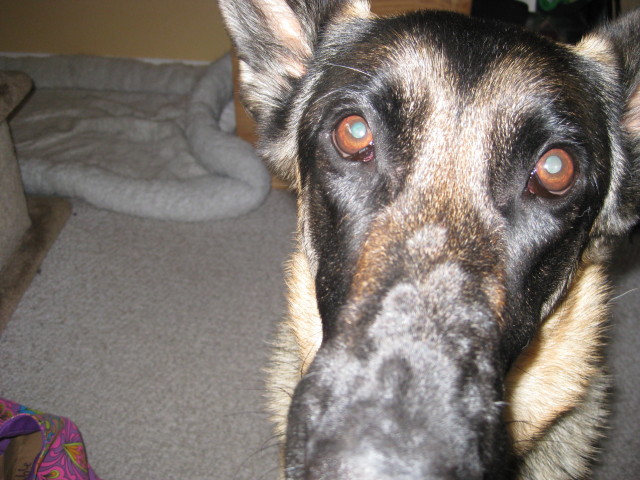 bumps on dogs nose
Question
bumps on nose
My dog has bumps on her nose..Sh
bumps on dogs nose
Question
bumps on nose
My dog has bumps on her nose..Sh
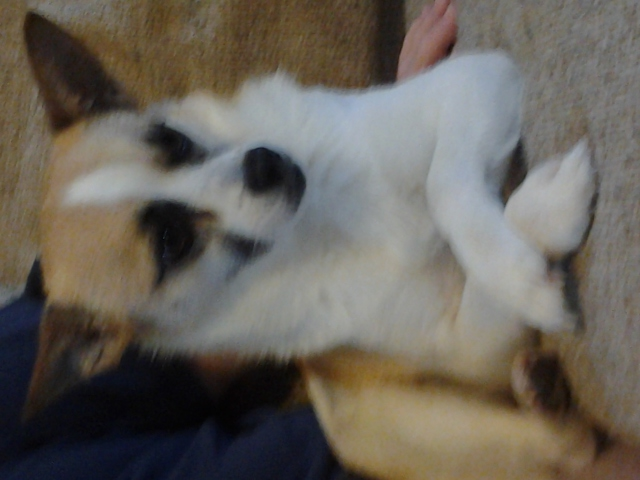 What type of do is my dog Abby
Question
Abby Abby
what type of dog is my
What type of do is my dog Abby
Question
Abby Abby
what type of dog is my
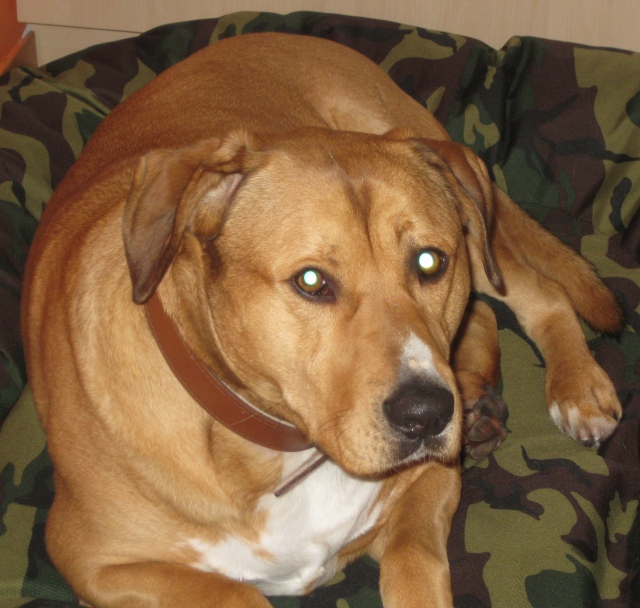 Strange dog behaviour ; organic brain syndrome in canine;
Question
Alfie
All of a sudden my 4 year old dog does n
Strange dog behaviour ; organic brain syndrome in canine;
Question
Alfie
All of a sudden my 4 year old dog does n
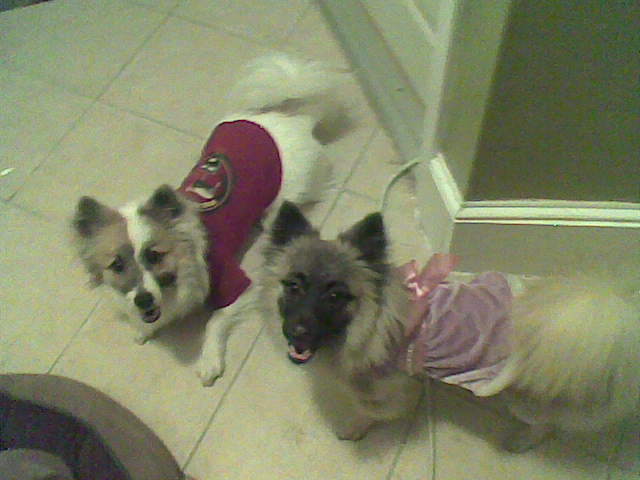 TRAINING POMERANIANS
Question
chichi&coco
I have two Pomeranian-mixed do
TRAINING POMERANIANS
Question
chichi&coco
I have two Pomeranian-mixed do
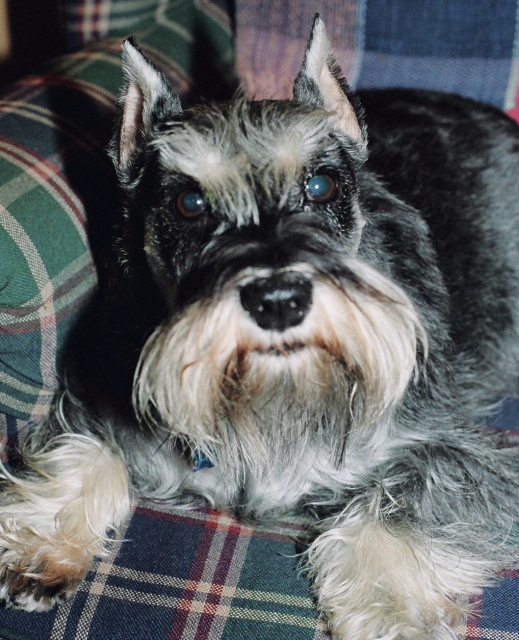 Miniature Schnauzer Flaky Skin
Question
Cicero
My 7-year-old miniature schnauzer Cicer
Miniature Schnauzer Flaky Skin
Question
Cicero
My 7-year-old miniature schnauzer Cicer